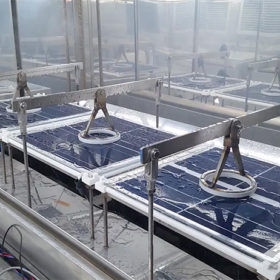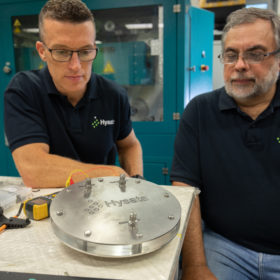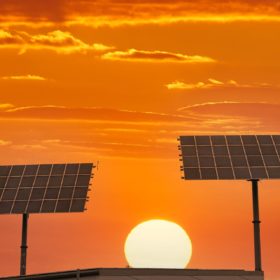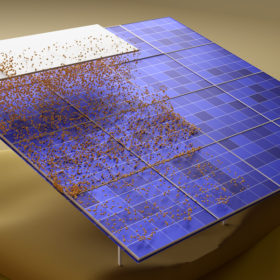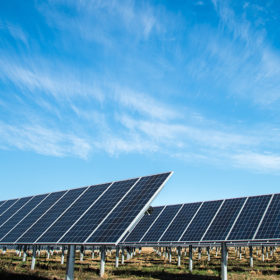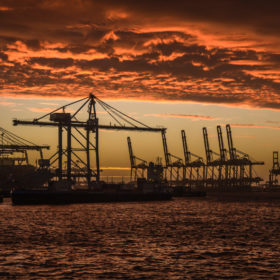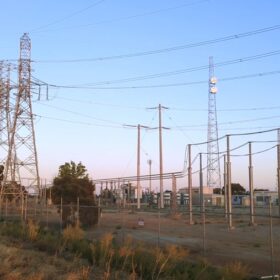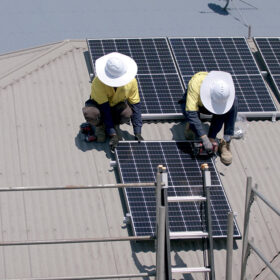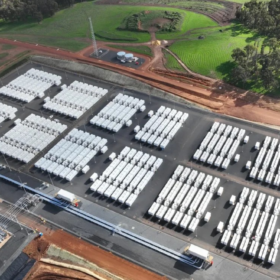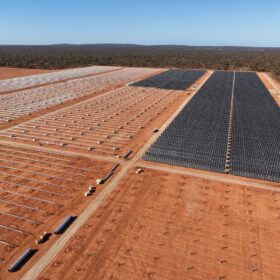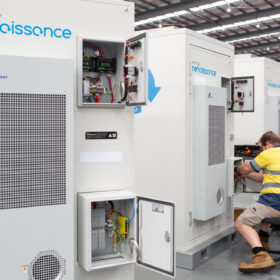Concentrating solar power with heat storage could compete with batteries
For short-term storage in a 100% renewables grid, thermal energy storage located at concentrating solar power plants could compete with batteries, found a study using an idealised grid model. Seasonal storage needs could best be met with power-to-gas-to-power technology.
Solar PV with a 50-year lifetime
The US Department of Energy’s durable materials consortium is a multi-laboratory unit that stress-tests solar modules for durability. It seeks to extend the useful life of PV.
Australian electrolyser invention enables green hydrogen under $2/kg by ‘mid 2020s’
“We’re not talking about incremental improvement, this is a really giant leap,” Hysata CEO Paul Barrett told pv magazine Australia. Hysata is commercialising a breakthrough made at the University of Wollongong which effectively, Barrett says, invented a “brand new category of electrolyser” vastly improving efficiency. “This is a 20% gain. This is really a seminal moment for the hydrogen industry.”
WA company to partner with Mercedes-Benz, building carmaker’s first foray into battery recycling
German luxury carmaker Mercedes-Benz has made public its plans partner with Primobius, a 50:50 joint venture between West Australian company Neometals and Germany’s SMS Group. Mercedes has said its intention is to build a 2,500 tonne per year lithium-ion battery recycling plant in southern Germany with Primobius as its technology partner.
World has installed 1TW of solar capacity
The world has installed its first terawatt of hardware on earth to generate electricity directly from the sun.
MIT scientists develop waterless PV cleaning system
Scientists from the Massachusetts Institute of Technology have developed a system that can be operated at a voltage of around 12V, with a 95% recovery rate for lost power after cleaning. The waterless system can be operated automatically via an electric motor.
Labor pledges $22m to establish Northern Australia’s first eco-industrial precinct
Federal Labor has promised to allocate $22 million to help establish the Lansdown Eco-Industrial Precinct being developed in northern Queensland if it wins the election in May.
NSW hydrogen company wins another ‘prestigious’ award for heat reaction tech
Star Scientific, a hydrogen technology company based north of Sydney, has won the global South By Southwest innovation award for its Hydrogen Energy Release Optimiser, or HERO technology.
‘Multibillion’ dollar solar, battery, hydrogen park to replace Gippsland coal attracts powerful superfund
A multibillion-dollar solar, battery storage, wind and potentially green hydrogen project in Victoria’s Gippsland region is moving forward after getting backing from superfund Hostplus. Originally proposed by Solis Renewable Energy, the project is now owned by Octopus Australia as part of its joint venture with CFEC.
Paving the way for green hydrogen certification
The International Renewable Energy Agency has outlined a series of technical considerations for green hydrogen tracking systems. According to the document, a degree of flexibility should be taken into account in the short term to ensure that the nascent green hydrogen market can develop.

